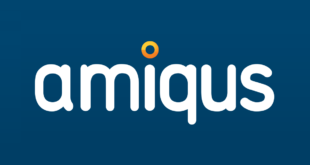At Leipzig, SCEE announced a series of exciting technological enhancements to PS3 and PSP. They are no doubt crucial to long term cross platform consumption and broad media supply for both devices. However, the industry reaction was luke warm because what the industry needs now is games, games and more games.
Both PS3 and PSP, despite price reductions will have a relatively disappointing Christmas as the Q4 games catalogue looks comparatively weak and there are few triple-A titles to drive hardware adoption.
WORLD: INSTALLED BASE BY PLATFORM
…………………..
…………………………….2007…………2009………..2011..
Sony Playstation 2…….112.6m………119.9m……..121.4m
Sony Playstation 3…….7.7m…………38.7m……….67.5m
Nintendo Wii…………….17.1m………..41.9m……….59.4m
Microsoft Xbox 360……13.9m………..26.8m……….36.4m
Nintendo DS ……………60.5m………..99.3m……….142.9m
Sony PSP ……………….29.8m………..51.7m……….74.1m
Source: Screen Digest…………………………………………….
The software big guns don’t arrive until the first half of next year, which will no doubt boost the consoles sales. But in the meantime the consumer does not have many reasons to buy a PS3 for gaming, at least. Sony seems to have drawn a line under 2007 ambitions with the recent announcement that the Home online community service too will be delayed until next year.
Screen Digest has always forecast that the sales growth curve for PS3 would be less steep than for previous generations due to a higher price and lower consumer understanding of its capabilities as a multi-media device. But the industry reaction, which we know can be sometimes impatient, has been quite scathing of Sony’s failure to drive hardware sales.
Some publishers (specifically UK-based) are concerned that Sony will not have any first party titles to suck in the consumer for both PS3 and PSP this Christmas. This could lead to some publishers postponing their own title launches until the installed base has improved – it’s a Catch 22, as always. It seems that elsewhere in Europe local managers are not so worried about the PlayStation brand.
We have seen how larger publishers can turn on a sixpence to support a console – EA recently admitted failing to back the Wii, but is now doing so.
Publishers, who are frustrated with Sony, will come hurrying back once the short term vacuum is over, but significantly turning around development on PS3 will take longer and cost more than on Wii. However, if you ask the heads of publishers to bet their farms on the long term success of PS3, they would take the bet. Microsoft and especially Nintendo are obviously much more competitive this time round, which must also add pressure to a brand not used to looking over its shoulder to such an extent.
For the PSP, there are many of the same concerns. Faced with a limited budget to invest in new content or IP, publishers see other platforms, especially the DS, as less of a financial risk than the PSP – even with a forecast global installed base of almost 30 million by the end of the year.
However, we expect the PSP to continue to achieve respectable sales as long as the PS3 hits its targets and the consumer can appreciate and understand the benefits of its inter-operability with the PS3. For PSP, read PS3, read PS3 portability. Most digital content a home has on its PS3 will eventually be available on its PSP on the move. The long-mooted remote play functionality will extend the longevity and viability of the platform.
Furthermore, the PSP should not have its performance compared to the DS which has become a sales phenomenon but is targeting a different market. As a new entrant, the PSP has been quite successful in terms of installed base, below industry expectations perhaps, but nonetheless not as poor as some commentators would make out.
So yes, Sony will have a difficult Christmas 2007, publishers are right to be nervous and consumers will continue to need educating about the benefits of PS3 and PSP past the new year. But by this time next year the industry should be repositioning its finances towards the two consoles and Sony will be in a better position to hold publishers’ hands along the path to its home media hub aspirations.
So, to Xbox 360 and Wii. The price reduction of Xbox 360 and subsequent new software releases Bioshock and Halo 3 will ensure that this Christmas will not be as tough in Europe as the first half of the year, when sales of hardware seemed to hit a wall. Indeed, the 360 should have the best software line-up among the three consoles. No doubt, at this point Microsoft would have wished to have been further along the sales curve and to have better exploited its headstart over the competition.
To realise this ambition Microsoft needed to gain better traction in France, Germany, Spain and Italy in order to put Europe on an equal footing with the USA; this inability to penetrate these markets is still very much its Achilles’ Heel in Europe.
This has not happened, so an improved final quarter will be the very least the 360 console needs to save face this side of the Atlantic. Mainland Europe still needs titles which appeal to a broader, more casual gamer, not the Anglo Saxon adult male genres which Microsoft excels in – plus a change, plus c’est la mme chose.
It still has Xbox Live, and even this platform proves that the way to attract female younger gamers is to offer simpler plug and play quick reward titles on Xbox Live Arcade. It is difficult to see the core 360 gamer radically changing in the coming year.
As for Nintendo Wii, hardware sales seem to be unstoppable, driving its global installed base to overtake Xbox 360 by mid-September 2007 in less than a year. Although not quantifiable, erratic supplies have kept the lid on an even more impressive performance.
Demand for hardware seems to be driven by just a few familiar first party licences – no change yet in the Nintendo catalogue make-up from its previous consoles. This suggests that price and the unique gameplay features could be the primary purchase tipping points, allied with a marketing campaign to communicate how much Wii fun we can all have.
Debate still rattles around blogs and the web community over the longevity of the Wii. Even some financial analysts have started to raise questions about the potential fad nature of the console. This ‘fad’ will endure at least a few more years, providing tens of millions of installed base reasons for publishers to direct development funds there.
The Wii installed base in Europe will be higher than the PS3 in 2009 but could be generating less software sales per console at that time. Looking at the Japanese charts in the past few weeks suggests that new titles on Wii are slow to come through and even the stalwarts of Wii Play and Wii Sports have fallen out of the Top Ten All Formats Listing.
The potential weakness of the Wii offering is that the target market of younger teens could become saturated quicker than for the same demographic on the DS. Will the unique lifestyle-type games which work on a portable device much loved by girls, translate to a static TV-based console? Market saturation for the Wii is therefore more likely than a broader-appealing PS3 if Sony achieves the same level of popularity that it did for the PS2.
So for the three home consoles, some of the market would like to see longer games catalogues – a few killer apps to drive PS3 sales, more casual games for Xbox 360 and some more adult titles for the Wii. What is more likely is that each console will maintain or grow its own demographic segment which it established in the previous generation.

 MCV/DEVELOP News, events, research and jobs from the games industry
MCV/DEVELOP News, events, research and jobs from the games industry



